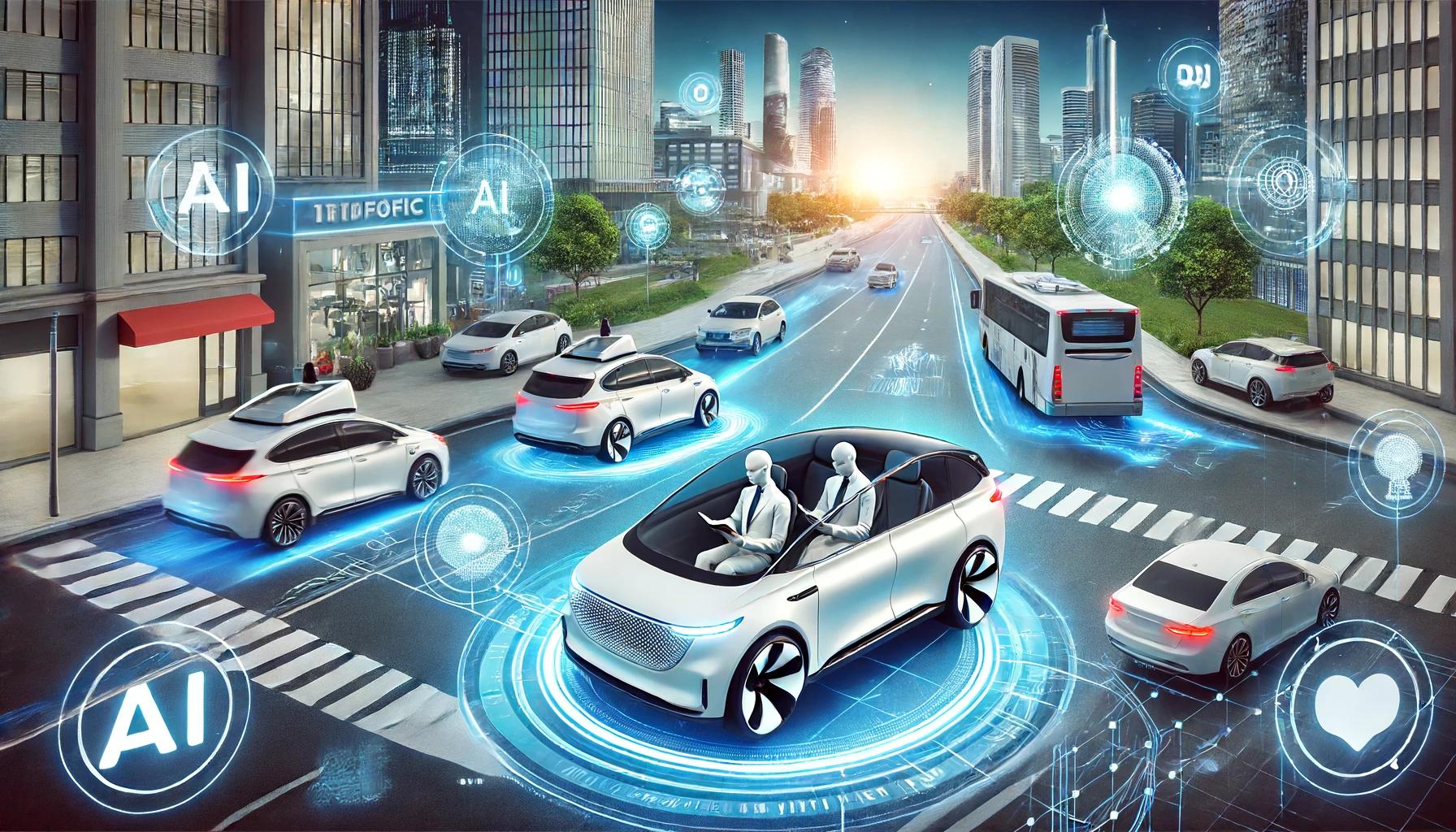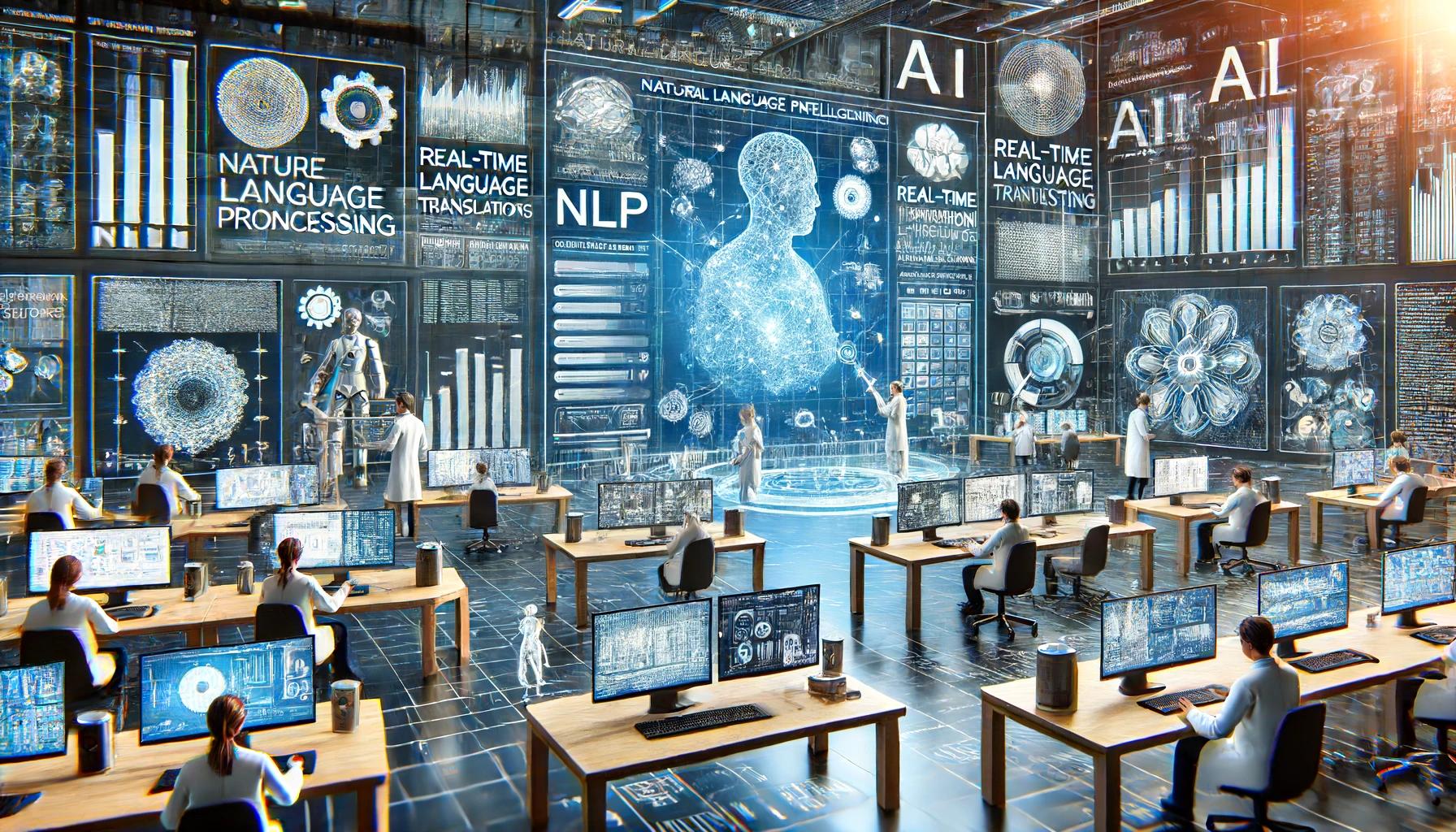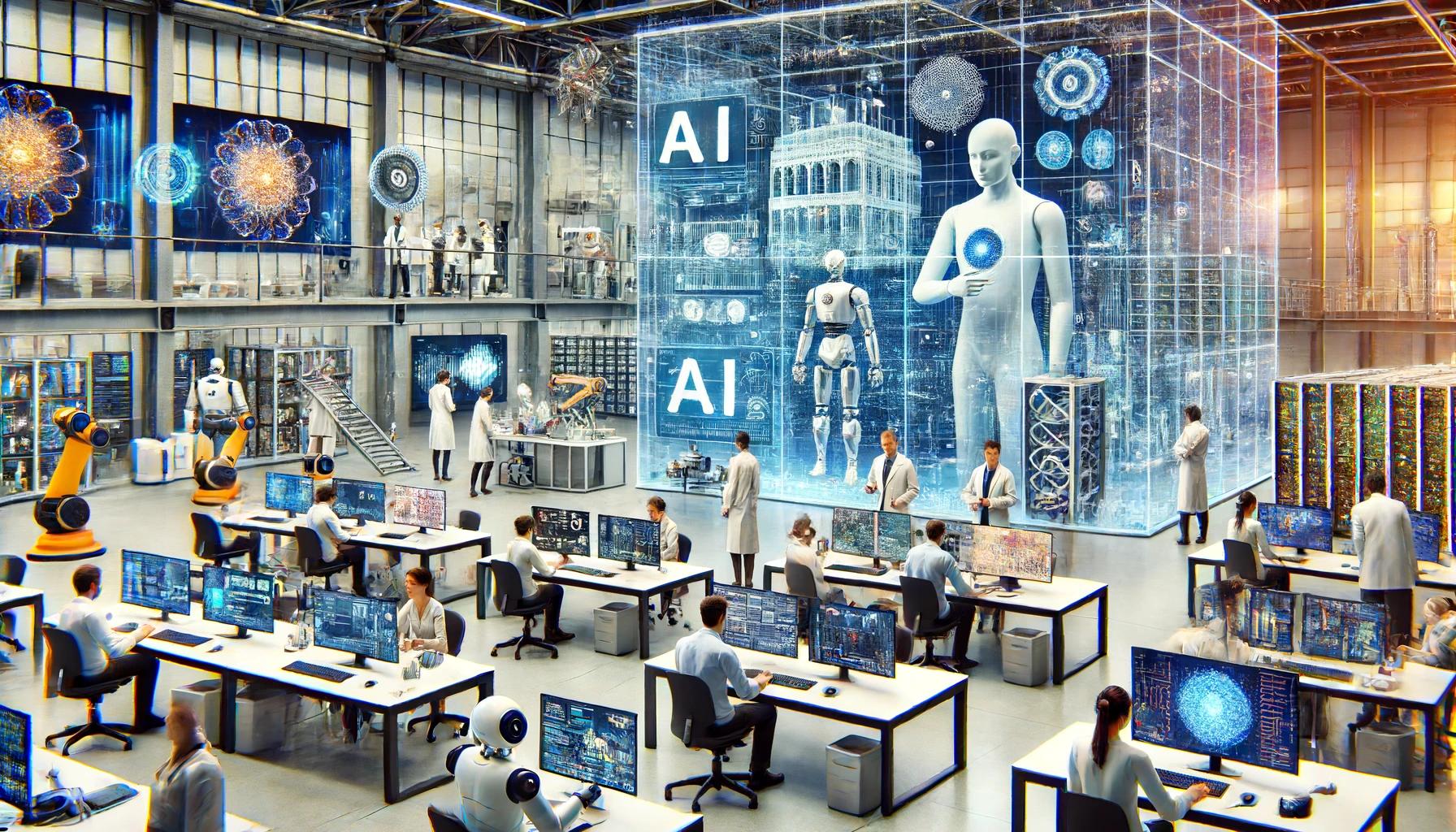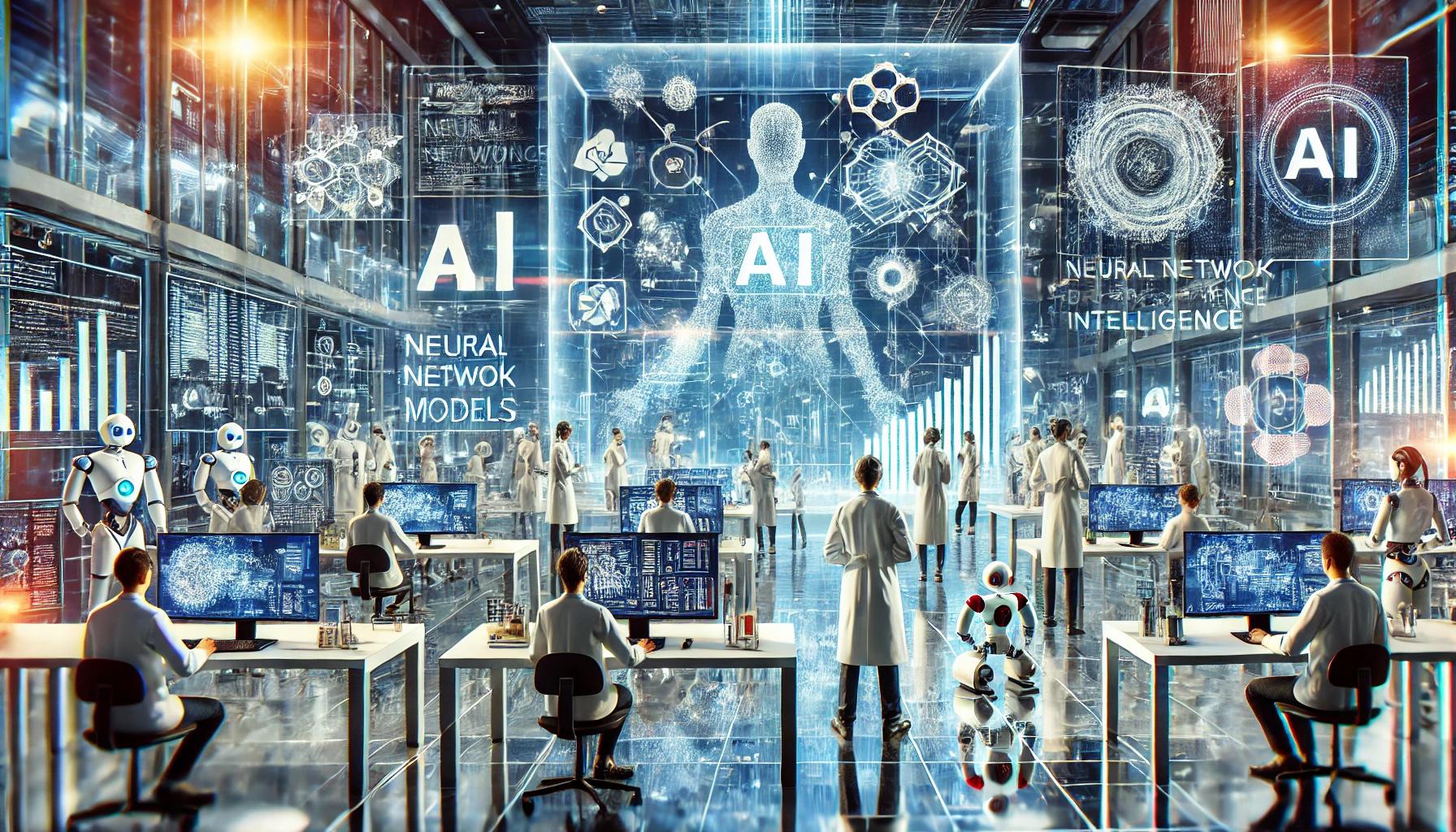- The Impact of AI Across Industries
- Autonomous Vehicles: A New Era in Transportation
- Article Overview and Goals
- The Evolution of Autonomous Vehicles
- Historical Background of Self-Driving Technology
- Key Milestones in the Development of Autonomous Vehicles
- Major Companies and Innovators in the Field
- How AI Powers Autonomous Vehicles
- Explanation of AI Technologies Used in Autonomous Vehicles
- The Role of Neural Networks and Deep Learning
- Importance of Big Data and Real-Time Processing
- Benefits of AI Autonomous Vehicles
- Improved Safety and Reduction in Accidents
- Enhanced Efficiency and Traffic Management
- Environmental Impact and Reduction in Emissions
- Increased Accessibility and Mobility for All
- Challenges and Concerns
- Technical Challenges
- Ethical and Legal Considerations
- Security and Privacy Issues
- Public Perception and Acceptance
- Current State of Autonomous Vehicles
- Overview of Current Autonomous Vehicle Technology and Its Capabilities
- Pilot Programs and Real-World Implementations
- Regulatory Landscape and Government Policies
- Future Prospects and Innovations
- Predictions for the Future of Autonomous Vehicles
- Potential Technological Advancements and Innovations
- Impact on Industries and Job Markets
The Impact of AI Across Industries
Artificial Intelligence (AI) is reshaping various sectors by enhancing efficiency, driving innovation, and revolutionizing processes. In healthcare, AI systems assist in diagnosing diseases and tailoring personalized treatment plans. The finance industry utilizes AI to detect fraud and optimize investment strategies. Manufacturing benefits from AI through predictive maintenance and automation, boosting productivity and minimizing downtime. Retail, entertainment, and customer service sectors have also seen significant improvements in user experience and operational efficiency thanks to AI. Explore more on AI in different industries
Autonomous Vehicles: A New Era in Transportation
Self-driving cars, or autonomous vehicles, are revolutionizing the way we think about transportation. Equipped with advanced AI technologies, these vehicles navigate and operate without human input, using sensors, cameras, and machine learning algorithms to understand their surroundings, make decisions, and drive safely. The potential impact of autonomous vehicles is immense: from enhancing road safety and reducing traffic congestion to providing greater mobility access. Leading companies like Tesla, Waymo, and Uber are spearheading the development and testing of these innovative technologies. Discover more about the significance of autonomous vehicles
Article Overview and Goals
This article delves into the world of AI-powered autonomous vehicles, exploring their current state and future potential. We will examine the technologies that enable these vehicles, the benefits they bring, and the challenges they face. Additionally, the article will discuss regulatory considerations and public perceptions, as well as the innovations poised to shape the future of transportation. Our goal is to provide a comprehensive understanding of how autonomous vehicles are transforming mobility and what this means for society.
The Evolution of Autonomous Vehicles
Historical Background of Self-Driving Technology
The concept of autonomous vehicles has a rich history that dates back several decades. The earliest attempts to create self-driving cars began in the 1920s and 1930s with radio-controlled vehicles and rudimentary automation. However, significant progress wasn’t made until the late 20th century. In the 1980s, projects like Carnegie Mellon University’s Navlab and the European Union’s PROMETHEUS program marked the first serious efforts to develop autonomous driving technology. These early initiatives laid the groundwork for the advanced systems we see today. Explore the history of autonomous vehicles
Key Milestones in the Development of Autonomous Vehicles
Several key milestones have marked the journey towards fully autonomous vehicles:
- 1995: Carnegie Mellon University’s Navlab 5 completed a cross-country drive from Pittsburgh to San Diego, with the car driving itself 98.2% of the time.
- 2004: DARPA (Defense Advanced Research Projects Agency) launched its first Grand Challenge, encouraging innovation in autonomous vehicle technology. While no vehicle completed the course, it spurred significant advancements.
- 2010: Google (now Waymo) announced its self-driving car project, which quickly became a leader in the field.
- 2015: Tesla introduced its Autopilot feature, bringing semi-autonomous driving capabilities to the consumer market.
- 2020: Waymo launched the first fully autonomous, public ride-hailing service in Phoenix, Arizona. Read more about autonomous vehicle milestones
Major Companies and Innovators in the Field
Several companies and innovators are at the forefront of autonomous vehicle technology:
- Waymo: Originally a project within Google, Waymo is now an independent subsidiary of Alphabet Inc. and a leader in the development of self-driving cars.
- Tesla: Known for its electric vehicles, Tesla has integrated advanced autonomous features through its Autopilot and Full Self-Driving (FSD) software.
- Uber: While facing challenges, Uber has invested heavily in autonomous vehicle technology, aiming to revolutionize ride-hailing services.
- General Motors (GM): Through its subsidiary Cruise, GM is developing and testing autonomous vehicles for a variety of applications.
- Ford: Partnering with Argo AI, Ford is working on deploying autonomous vehicles for commercial use. Learn more about key players in autonomous vehicles
How AI Powers Autonomous Vehicles
Explanation of AI Technologies Used in Autonomous Vehicles
Autonomous vehicles rely on a combination of advanced AI technologies to navigate, perceive their environment, and make driving decisions. Key technologies include:
- Machine Learning: This involves training algorithms on vast amounts of data to recognize patterns and make predictions. Machine learning is crucial for enabling autonomous vehicles to learn from experience and improve their performance over time.
- Computer Vision: Using cameras and sensors, autonomous vehicles can interpret visual data from their surroundings. Computer vision allows the vehicle to identify and track objects, recognize road signs, and detect lane markings.
- Sensor Fusion: Autonomous vehicles are equipped with various sensors, including LIDAR, radar, and ultrasonic sensors. Sensor fusion integrates data from these multiple sources to create a comprehensive understanding of the vehicle’s environment, enhancing accuracy and reliability. Learn more about AI technologies in autonomous vehicles
The Role of Neural Networks and Deep Learning
Neural networks, particularly deep learning models, play a pivotal role in the functionality of autonomous vehicles. These networks consist of multiple layers of interconnected nodes, or neurons, that process data in complex ways. Deep learning models excel at tasks such as:
- Object Detection and Recognition: Neural networks can accurately identify objects such as pedestrians, other vehicles, and obstacles, even in challenging conditions.
- Decision Making: Deep learning algorithms help the vehicle make real-time decisions based on the interpreted data, such as when to accelerate, brake, or change lanes.
- Trajectory Prediction: These models predict the future movements of objects around the vehicle, enabling it to navigate safely and avoid collisions. Discover the role of deep learning in autonomous vehicles
Importance of Big Data and Real-Time Processing
Big data is fundamental to the development and operation of autonomous vehicles. The vast amounts of data collected from sensors, cameras, and other inputs are used to train AI models and improve their accuracy. Key aspects include:
- Data Collection: Autonomous vehicles generate terabytes of data daily, capturing detailed information about their surroundings and driving conditions.
- Data Processing: Real-time processing capabilities are essential for analyzing this data instantly, allowing the vehicle to respond quickly to dynamic driving environments.
- Continuous Learning: Big data enables continuous learning and updating of AI models, ensuring that autonomous vehicles can adapt to new scenarios and improve their performance over time. Read more about big data in autonomous vehicles
Benefits of AI Autonomous Vehicles
Improved Safety and Reduction in Accidents
One of the most significant benefits of AI autonomous vehicles is their potential to enhance road safety. By eliminating human errors, which are responsible for the majority of traffic accidents, autonomous vehicles can drastically reduce the number of collisions. Advanced AI systems are capable of consistently monitoring the vehicle’s surroundings, making precise and quick decisions, and avoiding dangerous situations. This technological solution offers a promising future for accident-free driving in the automotive industry. Learn more about how autonomous vehicles improve safety
Enhanced Efficiency and Traffic Management
AI-powered autonomous vehicles are designed to optimize traffic flow and reduce congestion. These vehicles can communicate with each other and with traffic management systems to coordinate their movements, resulting in smoother traffic patterns and less idling. This enhanced efficiency not only saves time for commuters but also reduces fuel consumption. The automotive industry sees these solutions as crucial for managing urban traffic and improving overall transportation efficiency. Explore how autonomous vehicles enhance traffic management
Environmental Impact and Reduction in Emissions
Autonomous vehicles contribute to a greener environment by reducing emissions. Efficient driving patterns and optimized routes minimize unnecessary acceleration and braking, leading to lower fuel consumption. Furthermore, the integration of electric autonomous vehicles can significantly decrease the carbon footprint of the automotive industry. These environmentally-friendly solutions are essential for combating climate change and promoting sustainable transportation. Read more about the environmental impact of autonomous vehicles
Increased Accessibility and Mobility for All
AI autonomous vehicles have the potential to provide greater mobility for individuals who are unable to drive, such as the elderly, disabled, or those without a driver’s license. These vehicles offer a new level of independence and accessibility, ensuring that transportation is available to a broader segment of the population. By addressing mobility challenges, the automotive industry can offer inclusive solutions that enhance the quality of life for many people. Learn about the accessibility benefits of autonomous vehicles
Challenges and Concerns
Technical Challenges
AI autonomous vehicles face significant technical challenges that must be addressed to ensure safe and reliable operation. One major challenge is handling edge cases, or rare and unpredictable scenarios that the vehicle may encounter. These include unexpected obstacles, unusual traffic situations, or erratic behavior from other drivers. Additionally, adverse weather conditions, such as heavy rain, snow, or fog, can impair the sensors and cameras that autonomous vehicles rely on, making it difficult for them to accurately perceive their environment and respond appropriately. Developing robust solutions to these technical challenges is crucial for the automotive industry. Learn more about technical challenges in autonomous vehicles
Ethical and Legal Considerations
Ethical and legal issues present another significant hurdle for AI autonomous vehicles. One major concern is decision-making in critical situations, where the vehicle must choose the lesser of two evils, such as deciding between hitting a pedestrian or swerving into oncoming traffic. These ethical dilemmas raise questions about how autonomous vehicles should be programmed and who is responsible for their actions. Furthermore, the legal framework surrounding autonomous vehicles is still evolving, with regulations varying widely between jurisdictions. Establishing clear legal guidelines and ethical standards is essential for the automotive industry to navigate these challenges. Explore ethical and legal considerations of autonomous vehicles
Security and Privacy Issues
Security and privacy are critical concerns for AI autonomous vehicles. These vehicles rely on complex software and numerous sensors to operate, making them vulnerable to cyberattacks. Hackers could potentially take control of an autonomous vehicle, leading to dangerous situations. Additionally, the data collected by these vehicles, such as location information and personal details, raises privacy concerns. Ensuring robust cybersecurity measures and protecting user data are paramount for gaining public trust and ensuring the safe operation of autonomous vehicles in the automotive industry. Read more about security and privacy in autonomous vehicles
Public Perception and Acceptance
Public perception and acceptance are crucial for the widespread adoption of AI autonomous vehicles. Despite the potential benefits, many people remain skeptical or fearful of self-driving technology. Concerns about safety, loss of control, and the potential impact on jobs contribute to this skepticism. Building public trust requires transparent communication about the safety and reliability of autonomous vehicles, as well as demonstrating their benefits through real-world applications and pilot programs. The automotive industry must address these concerns to foster greater acceptance and adoption of autonomous vehicle technology. Learn more about public perception of autonomous vehicles
Current State of Autonomous Vehicles
Overview of Current Autonomous Vehicle Technology and Its Capabilities
Autonomous vehicle technology has made significant strides in recent years, moving closer to full autonomy. Modern autonomous vehicles are equipped with a suite of advanced sensors, including LIDAR, radar, cameras, and ultrasonic sensors, which work together to provide a comprehensive understanding of the vehicle’s surroundings. These vehicles utilize AI algorithms, machine learning, and computer vision to process sensor data, navigate complex environments, and make real-time driving decisions. While most current autonomous vehicles operate at Level 2 or Level 3 autonomy (partial to conditional automation), companies are actively testing Level 4 (high automation) and Level 5 (full automation) systems. These advancements enable features such as adaptive cruise control, lane-keeping assistance, and automated parking. Learn more about current autonomous vehicle technology
Pilot Programs and Real-World Implementations
Several pilot programs and real-world implementations of autonomous vehicles are currently underway, showcasing the technology’s potential and identifying areas for improvement. Notable examples include:
- Waymo: Waymo operates a fully autonomous ride-hailing service in Phoenix, Arizona, offering public rides without a safety driver. This program provides valuable insights into the practical challenges and benefits of autonomous transportation.
- Cruise: General Motors’ subsidiary, Cruise, is testing autonomous vehicles in San Francisco, focusing on urban environments and ride-sharing applications. Cruise aims to launch a commercial autonomous ride-hailing service soon.
- Uber ATG and Aurora: After selling its Advanced Technologies Group (ATG) to Aurora, Uber continues to partner with Aurora to develop self-driving technology for its ride-hailing and delivery services.
- Tesla: Tesla’s Full Self-Driving (FSD) beta program allows selected customers to test advanced autonomous features, gathering data to refine and enhance the technology. Explore more about autonomous vehicle pilot programs
Regulatory Landscape and Government Policies
The regulatory landscape for autonomous vehicles is evolving, with governments around the world developing policies and frameworks to ensure safe deployment. Key aspects include:
- United States: The National Highway Traffic Safety Administration (NHTSA) provides guidelines and regulations for testing and deploying autonomous vehicles. Individual states have their own rules, with California and Arizona being notable for their supportive policies.
- European Union: The EU has established a comprehensive framework for autonomous vehicles, focusing on safety, liability, and data protection. The European Commission’s Strategy on Connected and Automated Mobility aims to harmonize regulations across member states.
- China: China is aggressively pursuing autonomous vehicle development, with supportive policies and significant investments. Cities like Beijing and Shanghai have designated zones for testing autonomous vehicles and implementing pilot programs.
- International Collaboration: Efforts such as the United Nations Economic Commission for Europe (UNECE) are working towards creating global standards and regulations for autonomous vehicles. Read more about autonomous vehicle regulations
Future Prospects and Innovations
Predictions for the Future of Autonomous Vehicles
The future of autonomous vehicles holds exciting possibilities, with significant advancements expected over the next decade. Experts predict that fully autonomous, Level 5 vehicles will become commercially available, capable of operating without human intervention in all environments. As technology matures, the adoption of autonomous vehicles is expected to increase, leading to widespread use in personal transportation, ride-sharing, and delivery services. Autonomous vehicle fleets may become commonplace in urban areas, significantly reducing traffic congestion and enhancing mobility. Read more about future predictions for autonomous vehicles
Potential Technological Advancements and Innovations
Several technological advancements and innovations are poised to drive the future of autonomous vehicles:
- Enhanced AI and Machine Learning: Continuous improvements in AI algorithms and machine learning models will enable more accurate and reliable decision-making, even in complex and unpredictable driving environments.
- 5G Connectivity: The deployment of 5G networks will enhance vehicle-to-everything (V2X) communication, allowing autonomous vehicles to interact with each other, infrastructure, and traffic management systems in real-time.
- Advanced Sensors and LIDAR: Innovations in sensor technology, including high-resolution LIDAR and more robust radar systems, will improve the vehicle’s ability to perceive its surroundings accurately.
- Quantum Computing: The advent of quantum computing could revolutionize the processing capabilities of autonomous vehicles, enabling them to handle vast amounts of data more efficiently and make instantaneous decisions.
- Energy Efficiency and Sustainability: Integration with electric vehicle (EV) technology will make autonomous vehicles more energy-efficient and environmentally friendly, contributing to sustainable transportation solutions. Explore more about technological advancements in autonomous vehicles
Impact on Industries and Job Markets
The rise of autonomous vehicles will have profound effects on various industries and job markets:
- Transportation and Logistics: Autonomous vehicles will revolutionize the transportation and logistics sector, enabling efficient and cost-effective delivery services. Self-driving trucks and delivery robots will optimize supply chains and reduce operational costs.
- Automotive Industry: Car manufacturers will need to adapt to new business models, focusing on developing autonomous technology and offering mobility-as-a-service (MaaS) solutions. The demand for traditional vehicle ownership may decline as ride-sharing and autonomous fleets become more prevalent.
- Insurance and Legal Services: The insurance industry will undergo significant changes as liability shifts from drivers to vehicle manufacturers and software providers. Legal frameworks will need to evolve to address issues related to autonomous vehicle accidents and data privacy.
- Urban Planning and Infrastructure: Cities will need to redesign their infrastructure to accommodate autonomous vehicles, including dedicated lanes, smart traffic signals, and enhanced public transportation systems.
- Employment: While autonomous vehicles may displace certain jobs, such as truck drivers and taxi operators, they will also create new opportunities in technology development, cybersecurity, and infrastructure maintenance. Reskilling and upskilling programs will be essential to help workers transition to new roles in the evolving job market. Learn more about the impact of autonomous vehicles on industries and jobs




